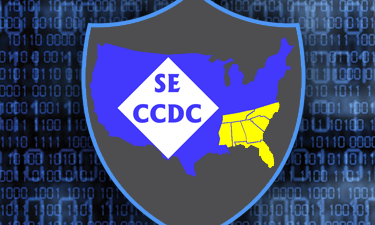Attacking the Cyber Security Skills Gap on the Ground Floor—Sponsoring the SECCDC
March 2, 2017

The statistics speak for themselves—the cyber security industry is facing a significant skills shortage.
But when people talk about this shortage, the discussion often centers on the need for ongoing training and education within the IT department.
In addition to ongoing training, we have to attack the cyber skills shortage on the ground floor. That’s why Garland Technology is sponsoring the 2017 Southeast Collegiate Cyber Defense Competition (SECCDC).
What Is the Southeast Collegiate Cyber Defense Competition?
The SECCDC started 12 years ago and was born out of a need for an alternative to the traditional capture the flag cyber competitions. In these traditional competitions, teams are put on offense as they hack their way to the opponent’s flag, defending their own flag as well. There is some defense involved, but you’re mostly thinking offensively.
It’s great to have knowledge of the offensive side, but defense is what translates best in the business world. The SECCDC gives college students experience with cyber security tactics and pairs them with business objectives.
The competition simulates for teams exactly what cyber security staff face in the business world, scoring student teams on three fronts:
- Service Availability: The team’s ability to maintain uptime throughout a simulated 8-hour work day.
- Red Team Assessment: A Red Team is introduced to present student networks with cyber attacks. The students may be penalized based on downtime caused by exploits.
- Business Task Response: Within the Red Team and service availability framework, 25 to 30 business problems are injected into the simulation. Students may be asked to do something as trivial as employee credential provisioning or as complex as replacing firewalls throughout the network.
This event, and the National Collegiate Cyber Defense Competition (NCCDC) it leads into, gives students an opportunity to gain real world experience in cyber security. While most of today’s cyber security professionals seek computer science degrees, these collegiate competitions are giving rise to cyber security as an academic discipline (like the Information Security Assurance program at Kennesaw State University).
Getting cyber security training into collegiate academics will help mold tomorrow’s CIOs, CISOs, and cyber security leaders—and the SECCDC is already succeeding in helping fill the skills gap.
How the SECCDC Is Filling the Cyber Security Skills Gap?
One of the mainstays of every SECCDC is the sponsor reception following the competition. Here, sponsors like the U.S. Government, Raytheon, IBM, Garland Technology and more gain access to the 80 or so students involved in the event.
The sponsors receive student resumes ahead of time, giving teams that participate in the SECCDC a unique opportunity to be recruited for cyber security positions upon graduation.
According to Dr. Herb Mattord, SECCDC Associate Director of Operations and Event Co-Coordinator, many students have walked out of the event with firm job offers. "This is what we need to help meet the cyber security skills shortage—educated professionals with the skills to see that security is a business problem with technology solutions, not just a technical problem within the business."
Garland Technology Sponsoring SECCDC—Growing Up with Network Visibility
We continuously stress the importance of 100% network visibility for proper cyber security. So it’s only fitting that we introduce this mindset at the collegiate level.
For the first time, the SECCDC is going to include network TAPs in the competition framework. Garland Technology will provide each of the 8 teams with its own network TAP and the winning team will go home with one to keep.
The network TAP can be used to test competitors on Wireshark, Snort, IPerf, SmokePing, Nmap, Nagios, NetworkMinder, WebMon and other tools that wouldn’t be available with the traditional SPAN port approach.
Teaching the students that network TAPs are essential for visibility and effective network management will only help serve the cyber security community as these competitors become tomorrow’ industry leaders.
The SECCDC takes place on April 5-6, 2017, and we’re happy to play a part in the event. We know that network TAPs might be a new concept for many of the student competitors—but getting them off on the right foot will benefit organizations of all sizes as they recruit cyber security talent.
If you’re looking for a bit more information about network TAPs and their role in cyber security, download our free white paper, Network TAPs 101: The Networking User Guide.

